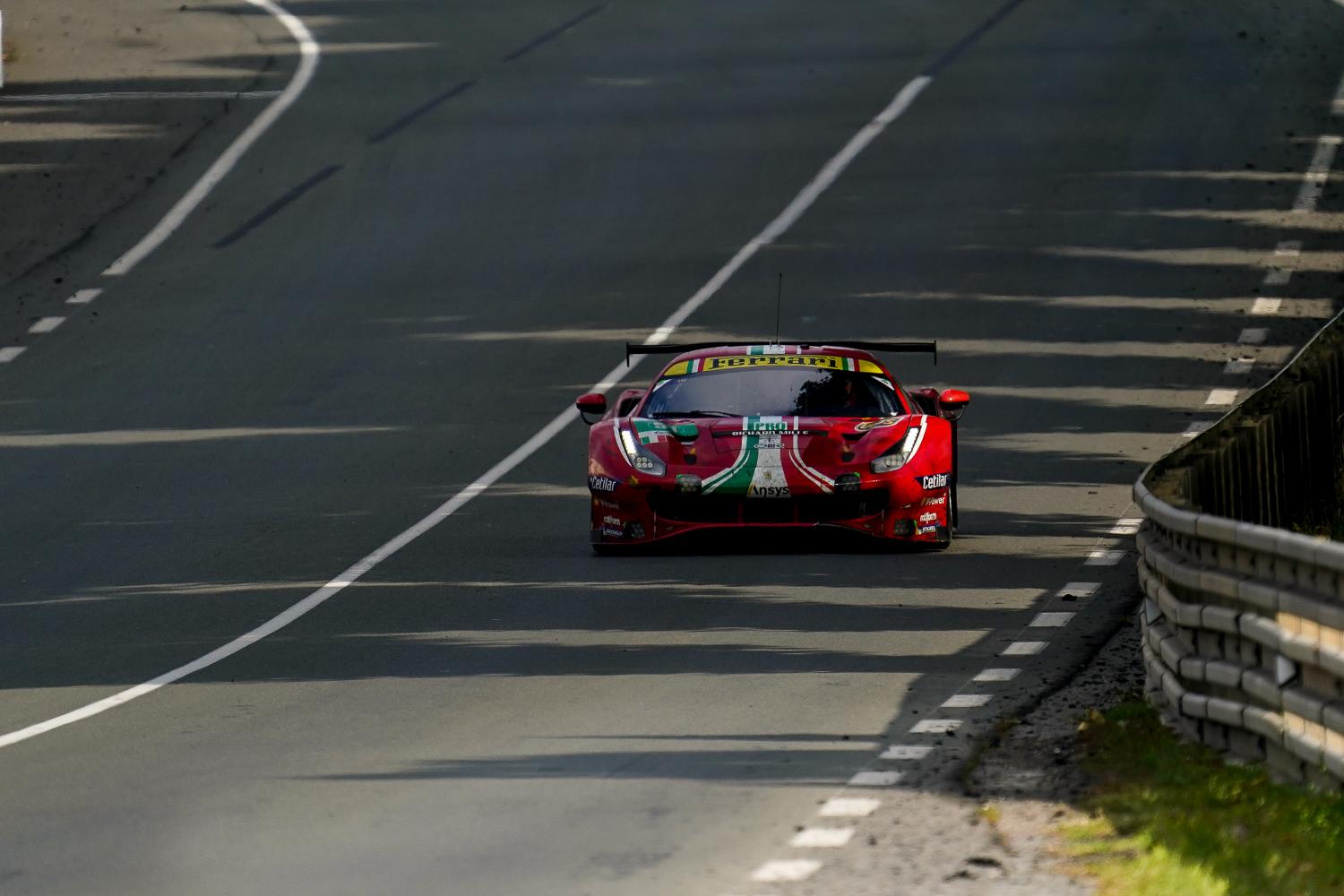24 HOURS CENTENARY – MAKES, MARQUES and IMPRINTS ⎮ Between the final appearance of the 333 SP prototype in 1999 and the debut of the 499 P Hypercar, the various GT classes have seen Ferrari's remarkable return to the pinnacle of endurance racing over the past 20 years.
Six models boosted Ferrari's track record at Le Mans between 2002 and 2022 as worthy successors to the 250 GT, 250 GTO, 265 GTB/4 Daytona and the 512 BBs of the 1960s, 1970s and 1980s.
M for Modena at Le Mans
Launched in 1999, the 360 Modena marked the beginning of Ferrari's reclaiming of its own legacy under the helm of Luca di Montezemolo. The car's make is the name of Enzo Ferrari's city of birth.
The 360 Modena took its rookie start in the 24 Hours in 2002. The Cirtek Motorsport team earned its best result in 2004 with 19th place overall thanks to Frank Mountain/Rob Wilson/Hans Hugenholtz. Three months later, Ferrari presented the F430 at the Paris Motor Show. The car succeeded the 360 Modena at Le Mans in 2006 (production of the road version ceased in 2005).
The 550 vs. the 575
The 550 Maranello made its first appearance in the race in 2002. Produced from 1996 and named after the location of the marque's factory, the car revived the Ferrari tradition of front-engined sports GTs, immortalised namely by the 250 GTO and the Daytona.
A client of David Richards' Prodrive team for rally, Franco-Swiss gentleman driver Frédéric Dor financed a racing version of the 550 Maranello developed by the team under the banner of Care Racing Development. In 2002, the car's first participation in the 24 Hours ended in retirement after a long stretch leading its class. The 550 won that class the following year thanks to Jamie Davies/Tomas Enge/Peter Kox, and Dor himself finished fifth along with three-time alpine skiing world champion Luc Alphand and Jérôme Policand.
Stunned by the success of a car born from a private initiative, Ferrari quickly presented the 575 GTC. However, the 575 was forced to retire in 2004 and 2005 while the 550 regularly made it to the chequered flag thanks to Prodrive (9th and 11th in 2004), Larbre Compétition (14th in 2004 and 12th in 2005) and Cirtek Motorsport (17th in 2005 and 14th in 2007).
The F430 | A pureblood for Texas
Around the same time, another chapter of Ferrari's reconquest of Le Mans had already begun with the first entry of the F430 in 2006. The car was a direct descendant of the 360 Modena with an identical engine architecture (longitudinal rear central V8) and a silhouette made more aggressive by multiple vents.
Managed by the marque's customer competition department, the F430 took its first start in the 24 Hours in 2006. Giuseppe Risi, a Ferrari dealer in Houston who had become the marque's endurance partner across the Atlantic, won back-to-back class victories in 2008 and 2009. Just a few weeks after the second win, Ferrari unveiled the 458 Italia at the Frankfurt Auto Show.
The 458 Italia | A new peak
The name was chosen to celebrate all the charms of Italy: excellent food, great music, bel canto...and of course, exceptional sports cars. Shaped with decidedly more angular bodywork than the 360 and F430 that preceded it, the 458 Italia completed Ferrari's reconquest of Le Mans in the LMGTE classes after making its first appearance in 2011.
The car's reign coincided with the establishment of the new FIA World Endurance Championship in 2012. The 458 scored four class wins at the 24 Hours (AF Corse in LMGTE Pro in 2012 and 2014, SMP Racing in 2015 and Scuderia Corsa in 2016 in LMGTE Am).
The 488 | The last LMGTE
Presented in February 2015, the 488 GTB accentuated the aggressive lines of the 458. The first turbocharged mid-engined Ferrari since the 1987 F40, it was soon recreated in a racing version, finishing second in LMGTE Pro for its rookie start in the 24 Hours entered by Risi Competizione. British team JMW Motorsport took the car to the top step on the podium for the first time in LMGTE Am the next year.
After a first victory in LMGTE Pro in 2019, AF Corse and the 488 GTE EVO pulled off a breathtaking double win in 2021 in both LMGTE classes in the presence of Ferrari President John Elkann who served as official starter that year!
From GT to Hypercar | a Centenary, a goodbye and a return
Ferrari has accumulated 11 class wins at Le Mans over the last two decades. The most recent achievement being the LMGTE Am victory secured by French driven Lilou Wadoux who, at the wheel of a 488 on 29 April at Spa-Francorchamps, became the first woman to win in the FIA WEC, all classes considered.
For the last race of the LMGTE Am class, seven 488 GTEs are expected at the Centenary this year. While all eyes are sure to be on Ferrari's return to the top class with the 499 P Hypercar, the 488 GTE will seek a fifth and final win at the 24 Hours before ceding its place to the 296 in 2024.
PHOTOS (Copyright - ACO/Archives): LE MANS (SARTHE, FRANCE), CIRCUIT DES 24 HEURES, 2003-2021 24 HOURS OF LE MANS. From top to bottom: in 2021, AF Corse's #51 488 GTE EVO secured Ferrari's last win in LMGTE Pro; in 2003, the #70 360 Modena and #88 550 Maranello hit the track at the 24 Hours, the latter clinching the class victory; the #82 F430 in 2008 and #51 458 Italia in 2012 gave Italian driver Gianmaria Bruni two of his three class wins at Le Mans; the #83 488 GTE of François Perrodo/Nicklas Nielsen/Alessio Rovera (n°83) completed Ferrari's success in the two LMGTE class in 2021.






